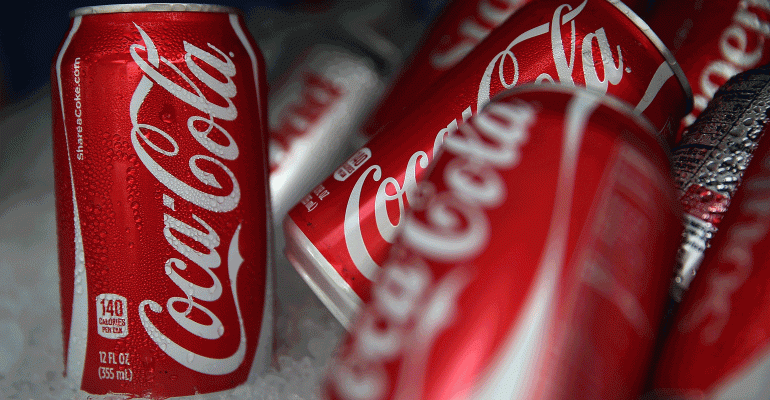Over the past few years, a number of cities and counties have introduced taxes on sugary beverages, specifically soda. Restaurant operators must know how these taxes are applied, and how to insulate the bottom line.
The first major sugary drink tax was introduced in 2012 by New York City mayor Michael Bloomberg. The Sugary Drinks Portion Cap Rule limited the sale of beverages larger than 16 ounces. However, the rule was struck down by the New York Court of Appeals as an overreach by the city’s board of health. Still, support for the measure continues.
While the effort in New York City was unsuccessful, several municipalities have approved excise taxes on sugary beverages since then, and the momentum is growing.
This summer, the Philadelphia city council approved a 1.5-cent-per-ounce tax on sweetened beverages that takes effect in January, making Philadelphia the first large city to approve a sweetened beverage tax.
Cook County, Ill., passed a 1-cent-per-ounce sugar tax, in addition to a 9-percent tax on wholesale fountain drink syrup. The Cook County tax will take effect in July 2017, making the county — which includes Chicago and has a total of 5.1 million residents — the largest area in the U.S. to initiate a soda tax.
According to the Philadelphia Inquirer, Philadelphia’s tax is expected to generate tens of millions of dollars slated for pre-K programs, community schools, parks, recreation centers and libraries, as well as a tax credit for businesses that sell healthful beverages.
In Cook County, county board president Toni Preckwinkle intends to use estimated revenue of $74 million in the remaining months of fiscal 2017 to avoid continued government payroll cuts.
With these types of revenue opportunities, it’s not a question of if other cities will follow suit, but when. So, how can restaurants mitigate the effects of these taxes?
1. Don’t get taxed on spilled soda. Most of these taxes will be collected at the distribution source, meaning the cost will be passed to restaurants based on the amount they purchase, despite how much is actually sold to customers. It is common for restaurants to have a lot of waste when filling soda cups or cleaning the lines that supply soda. As a result, spilled soda is still taxed. Restaurants must minimize spills and keep machines running properly.
2. Reconsider refill policies and the location of soda stations. Many restaurants have a free refill policy, especially quick-service restaurants, where it is common for customers to fill their own cups. This practice may need to be abandoned and replaced with a model that places the point of refill behind the counter for staff members to fill cups, as Chick-fil-A commonly does. By changing the location, customers may be discouraged to refill their beverage, which may ultimately save you money.
For customers still looking for a refill, it may be worthwhile to charge for it. However, prior to making such physical changes, consider the cost and operational feasibility of doing so (i.e., increase in service time, additional labor expenses, construction costs), and the impact on the customer experience and brand perception.
3. Review cup sizes. Assuming the beverages are on premise, or prepared in front of the customer, there may be an opportunity to adjust sizes. This is a common practice at grocery stores, which tend to shrink product sizes rather than increase prices. For instance, in the winter of 2010, Florida was hit by a freeze that impacted the orange harvest. PepsiCo reduced the size of the 64-ounce containers commonly sold in grocery stores by nearly 8 percent, to 59 ounces.
4. Be transparent. If you move the point of refill to behind the counter, be honest with customers about why you’ve made the change. Similarly, if you implement a refill charge, make sure it’s a charge that makes sense to the customer. If it’s a penny per ounce tax, base the refill charge on the tax to make it easily explainable to the customer by your staff.
An unlikely but hopeful scenario is that restaurants may be able to pass the cost onto the customer in the form of a line item on the receipt. If the restaurant is purchasing the soda from another store outside of the city or county that is not a distributor, then the tax must be directly placed on the restaurant that is selling the beverage in the city. As such, restaurants may be able to pass it along as an item on the receipt, rather than a menu price increase.
Just as sales tax is not commonly built into menu prices in the U.S., it could be advantageous to maintain the current price of your beverages and implement a separate charge similar to the tax. Being able to reflect the added charge separately would help alleviate the negative perception that the restaurant is increasing prices, but rather it is the local government that is increasing the price.
5. Employ a smart pricing strategy. If you plan is to increase prices directly on the menu board, it might seem obvious to increase prices by the amount of the tax. However, customers respond differently to price changes based on restaurant location and item. If the price increase leads the customer to purchase another beverage with lower margins, not purchase a beverage or reduce their restaurant visit frequency, the bottom line can suffer. What was intended to help offset the cost of the tax could ultimately hurt profitability. Understand how your customers have responded to price changes in the past and consider alternative items that have gone unscathed after a price increase to drive incremental profit. You might find opportunities outside the beverage category to offset those prices.
Update: Dec. 20, 2016 This story has been updated to clarify that the tax in Philadelphia applies to sweetened beverages, which includes both artificial and natural sugars.





